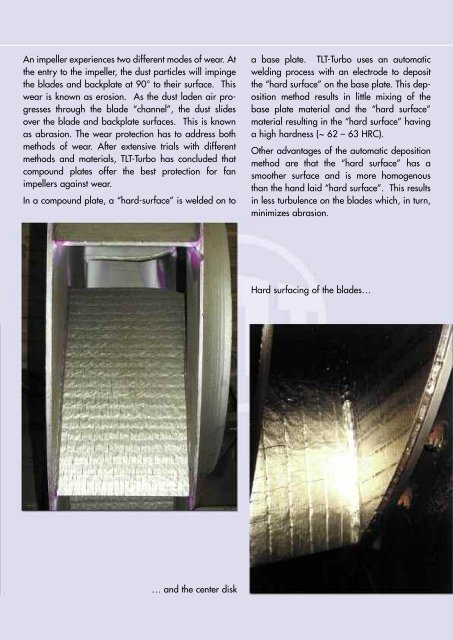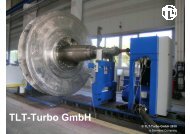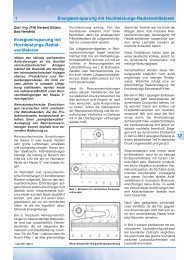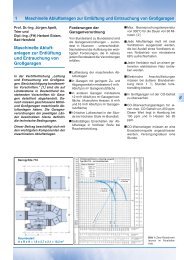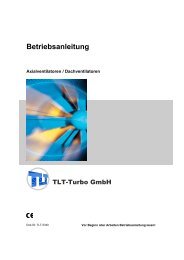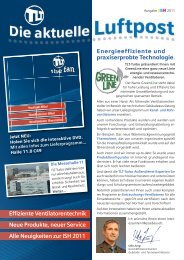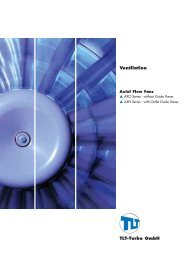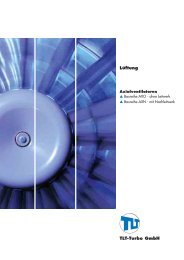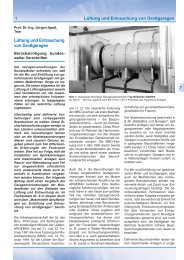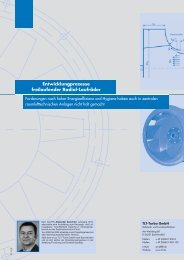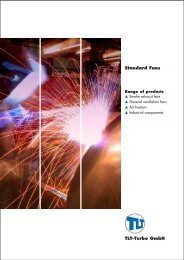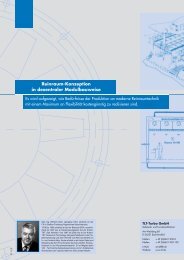Centrifugal Fans Cement Plants - TLT Turbo GmbH
Centrifugal Fans Cement Plants - TLT Turbo GmbH
Centrifugal Fans Cement Plants - TLT Turbo GmbH
You also want an ePaper? Increase the reach of your titles
YUMPU automatically turns print PDFs into web optimized ePapers that Google loves.
An impeller experiences two different modes of wear. At<br />
the entry to the impeller, the dust particles will impinge<br />
the blades and backplate at 90° to their surface. This<br />
wear is known as erosion. As the dust laden air progresses<br />
through the blade “channel”, the dust slides<br />
over the blade and backplate surfaces. This is known<br />
as abrasion. The wear protection has to address both<br />
methods of wear. After extensive trials with different<br />
methods and materials, <strong>TLT</strong>-<strong>Turbo</strong> has concluded that<br />
compound plates offer the best protection for fan<br />
impellers against wear.<br />
In a compound plate, a “hard-surface” is welded on to<br />
… and the center disk<br />
a base plate. <strong>TLT</strong>-<strong>Turbo</strong> uses an automatic<br />
welding process with an electrode to deposit<br />
the “hard surface” on the base plate. This deposition<br />
method results in little mixing of the<br />
base plate material and the “hard surface”<br />
material resulting in the “hard surface” having<br />
a high hardness (~ 62 – 63 HRC).<br />
Other advantages of the automatic deposition<br />
method are that the “hard surface” has a<br />
smoother surface and is more homogenous<br />
than the hand laid “hard surface”. This results<br />
in less turbulence on the blades which, in turn,<br />
minimizes abrasion.<br />
Hard surfacing of the blades…


